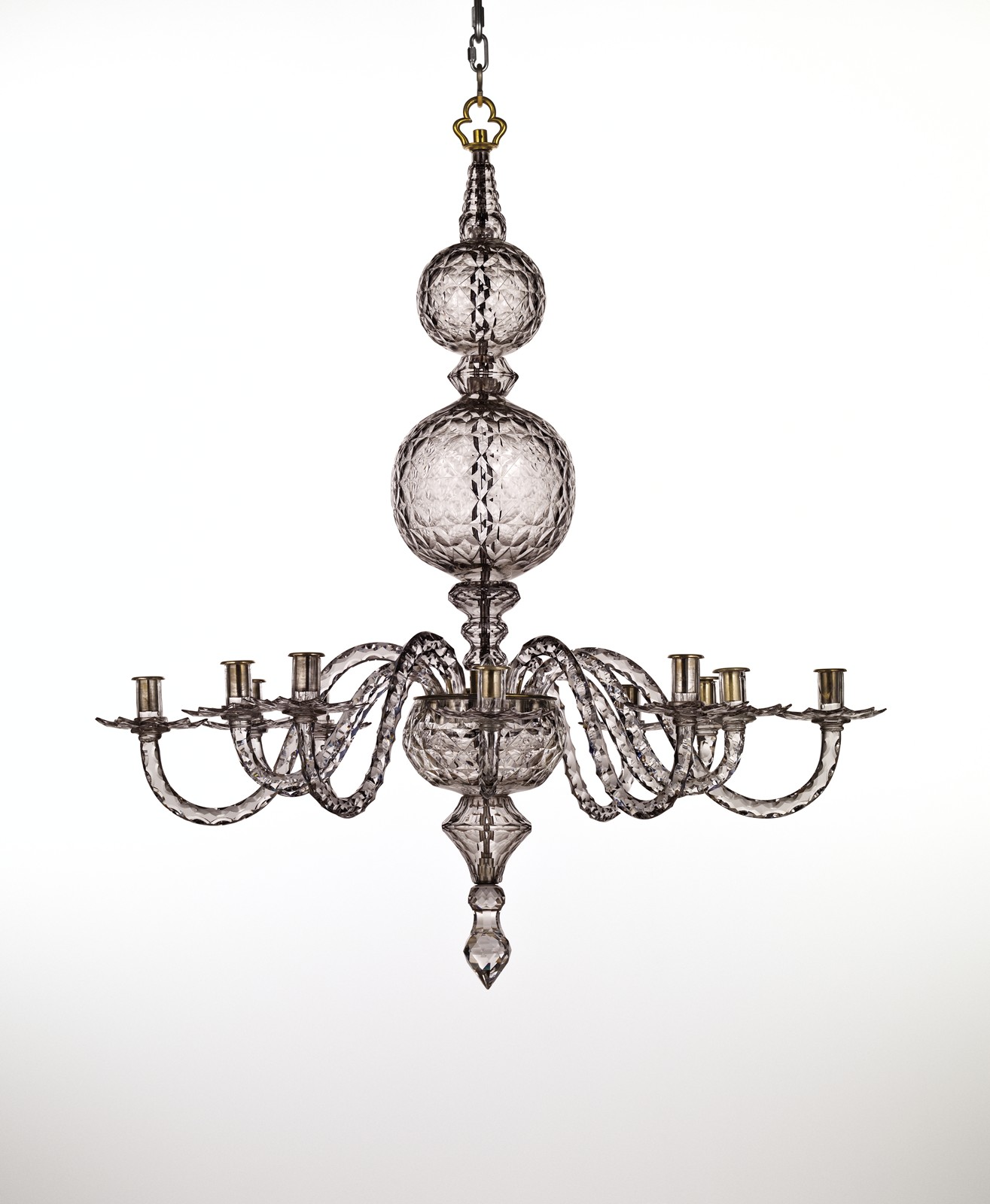A recently acquired twelve-armed cut glass chandelier was installed this month in the Museum’s crossroads, at the intersection of the Contemporary Glass Gallery and the Glass Collection Galleries.
The ceiling where the chandelier was installed is above a two-story opening to the ground floor. Our preparators are no strangers to scaling great heights to install and de-install glass artworks, and were able to hang the delicate object piece by piece by using a lift.
Crafted around 1760-1765, the Museum’s chandelier with twelve arms is one of the most intact examples of an English cut glass chandelier from that time period. The chandelier has all of its original arms and drip pans, a rare occurrence as these parts were often easily broken or damaged.
In the 18th century, the English chandelier became an important decorative component within the elegant interiors in the homes of the nobility. This style of chandelier grew out of a 17th-century desire for spectacular lighted centerpieces that were originally constructed from rock crystal. Glass was more accessible and affordable than rock crystal, and it could be just as stunning when it was properly cut and illuminated.

Additional arms wait in carts to be put back together while Warren Bunn and Stephen Hazlett watch on as Fritz attaches an arm onto the hanging chandelier body.
A significant enhancement to the basic form of this chandelier was the use of finely executed decorative cutting on all of its elements. The cutting amplified the reflective qualities of the glass and made the entire assemblage a beautiful and glittering addition to an interior space. Watch how this technique was done in this video on lathe cutting.
Another similar chandelier of this period hangs in Independence Hall in Philadelphia. Dated around 1745-55, it differs in arm and stem configuration, but has twelve arms and is cut in a similar fashion to the Museum’s recent acquisition.
 Chandelier with Twelve Arms, European, England, about 1760-1765. Blown, cut, and assembled. Overall H: about 125 cm, Diam (max): about 107 cm (2012.2.8) View the full record in the Collections Browser: http://www.cmog.org/artwork/chandelier-twelve-arms
Chandelier with Twelve Arms, European, England, about 1760-1765. Blown, cut, and assembled. Overall H: about 125 cm, Diam (max): about 107 cm (2012.2.8) View the full record in the Collections Browser: http://www.cmog.org/artwork/chandelier-twelve-arms



